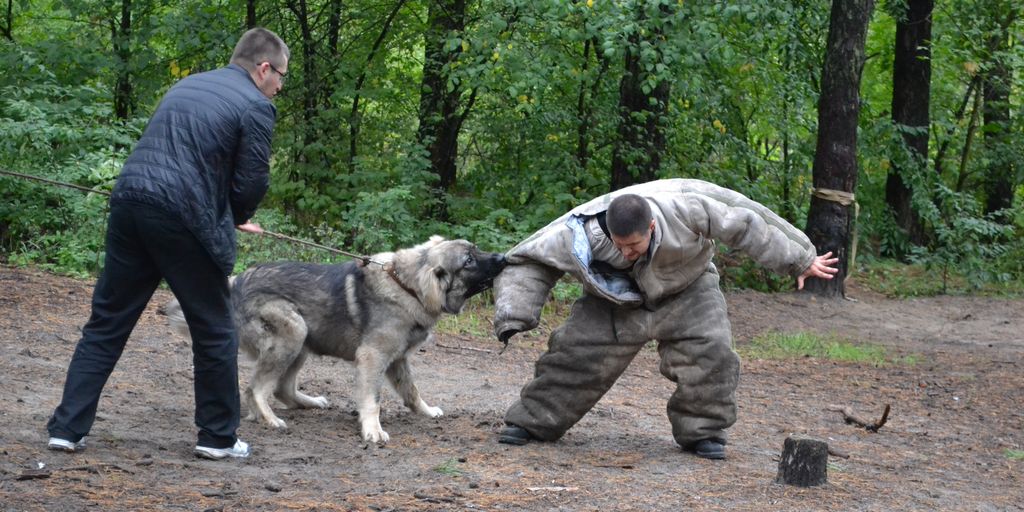Basic obedience training is the foundation of a well-behaved dog. Teaching your puppy commands like sit, wait, come, and leash manners not only makes life easier but also fosters a strong bond between you and your canine companion. By focusing on rewards, motivation, and understanding your dog’s individual needs, you can build a strong foundation for obedience and establish a healthy and loving relationship with your furry companion.
Key Takeaways
- Basic obedience training is essential for a well-behaved and socially compatible pet.
- Using positive reinforcement can make training a positive and enjoyable experience for both you and your dog.
- Teaching basic commands like sit, stay, and come lays a solid foundation for more advanced training.
- Proper early training, including socialization, helps your pup grow up to be well-adjusted and less fearful.
- Consistency and regular practice are key to maintaining your dog’s training and ensuring long-term success.
Why Basic Obedience Training Matters
Building a Strong Bond
Obedience training is crucial for dogs as it helps them cope with their surroundings and leads to a better quality of life. By investing time and effort into training, you are laying the groundwork for a happy and healthy relationship with your canine companion. Training your puppy commands like sit, wait, come, and leash manners not only makes life easier but also fosters a strong bond between you and your furry friend.
Ensuring Safety
A well-trained dog is less likely to get into dangerous situations. Commands like stay and come can prevent your dog from running into traffic or approaching unknown animals. This not only keeps your dog safe but also gives you peace of mind.
Enhancing Communication
Training enhances the communication between you and your dog. When your dog understands what you expect from them, it reduces frustration for both parties. This clear line of communication makes for a more harmonious household.
Remember, dog obedience training is an ongoing process that requires consistency and dedication. By investing time and effort into training your dog, you are not only improving their behavior but also strengthening the bond between you and your furry companion.
Getting Started with Basic Obedience Training
Starting with basic obedience training is essential for a well-behaved dog. It sets the foundation for more advanced commands and helps in building a strong bond between you and your furry friend. Here’s how to get started:
Setting Up a Training Schedule
Creating a consistent training schedule is crucial. Aim for short, frequent sessions—about 5-10 minutes each. Consistency is key to making sure your dog understands and retains the commands. Always end on a positive note to keep your dog motivated.
Gathering Essential Supplies
Before you begin, gather all the necessary supplies. This includes treats, a clicker, and a leash. Using positive reinforcement like treats and praise will make the training process smoother and more enjoyable for your dog.
Creating a Positive Environment
A positive environment is vital for effective training. Make sure the training area is free from distractions. Celebrate small victories and practice patience, as every dog learns at their own pace.
Unlock a spotless home paradise! Learn obedience training for a happier pet with Fit & Fetch Dog Care. Strengthen bond, enhance communication, and ensure safety through basic commands.
Teaching the Sit Command
Step-by-Step Guide
Teaching your dog to sit on command is one of the most fundamental skills. Here's a simple guide to get you started:
- Get your dog's attention with a treat.
- Hold the treat close to their nose and slowly move it upwards.
- As their head follows the treat, their bottom will naturally lower.
- Once they sit, immediately say "sit" and give them the treat.
- Repeat this several times until your dog associates the word "sit" with the action.
- Gradually phase out the treat, rewarding only with praise or occasional treats.
Common Mistakes to Avoid
Avoid these common pitfalls to ensure successful training:
- Inconsistency: Make sure everyone in the household uses the same command and method.
- Overusing treats: Rely more on praise as your dog gets better.
- Rushing the process: Take your time and be patient.
When to Move On
You'll know it's time to move on to more advanced commands when:
- Your dog sits promptly on command without hesitation.
- They can hold the sit position for longer durations.
- They respond to the sit command in various environments.
Consistency and patience are key. Celebrate small victories and keep training sessions short and fun.
Mastering the Stay Command
Teaching your dog the "stay" command is essential for their safety and your peace of mind. It helps in various situations, from preventing them from running into traffic to ensuring they remain calm in a busy environment. Consistency is key when training this command, so be patient and persistent.
Step-by-Step Guide
- Start with your dog in the "sit" position.
- Hold your hand up like a stop sign in front of your dog's face and say "stay."
- Take one step back while keeping your hand up.
- If your dog stays in position, return to them, give a reward, and release with "okay."
- Gradually increase the distance and duration, rewarding for longer stays.
- Add distractions like toys or other people to make the command more challenging.
Common Mistakes to Avoid
- Moving too quickly: Gradually increase the distance and duration to avoid overwhelming your dog.
- Inconsistent commands: Always use the same hand signal and verbal cue to avoid confusion.
- Lack of patience: Training takes time, so stay positive and don't rush the process.
When to Move On
Once your dog can stay reliably in a variety of settings and with different distractions, you can start incorporating the "stay" command into more complex training routines. This will help reinforce their impulse control and ensure they respond well in various situations.
Remember, mastering the "stay" command is a gradual process. Celebrate small victories and keep training sessions short and positive.
The Importance of the Come Command
The come command is one of the most crucial commands you can teach your dog. Establishing reliable recall ensures your dog returns promptly to you, which is vital for their safety and your peace of mind. This command can be one of the more challenging techniques to teach a puppy because puppies are basically as loyal as their options. A young dog's mind is easily distracted, making consistency and patience key.
Step-by-Step Guide
- Start in a quiet, distraction-free environment.
- Use an enthusiastic voice and lots of treats to make coming to you a positive experience.
- Gradually increase the distance between you and your dog.
- Practice in various situations to build reliability.
Common Mistakes to Avoid
- Avoid calling your dog to you for negative experiences, like bath time or punishment.
- Don't repeat the command multiple times; it can teach your dog that they don't have to respond immediately.
- Be patient and don't rush the process.
When to Move On
Once your dog reliably comes to you in a controlled environment, start practicing in more challenging settings. Gradually introduce distractions and increase the distance. Remember, consistency is key to mastering this command.
The come command is not just about obedience; it's about building trust and ensuring your dog's safety in various situations.
Leash Training Basics
Choosing the Right Leash and Collar
Selecting the appropriate leash and collar is crucial for effective leash training. A sturdy leash and a comfortable collar or harness can make all the difference. Harnesses are often recommended as they provide added support and prevent strain on your dog's neck. Here are some options to consider:
- Standard Leash: Ideal for everyday walks.
- Retractable Leash: Offers more freedom but requires more control.
- Long Training Leash: Great for practicing commands like "come" in open spaces.
Step-by-Step Guide
- Introduce the Leash: Let your dog get used to the leash by allowing them to sniff and explore it.
- Attach the Leash: Clip the leash to your dog's collar or harness and let them walk around indoors.
- Start Walking: Begin with short walks in a quiet area, gradually increasing the distance.
- Use Commands: Incorporate commands like "heel" and "come" to guide your dog.
- Reward Good Behavior: Use treats and praise to reinforce positive behavior.
Leash training is not just about control; it's about building trust and communication with your dog.
Common Challenges and Solutions
Leash training can come with its own set of challenges. Here are some common issues and how to address them:
- Pulling on the Leash: Stop walking and wait for your dog to come back to you before continuing.
- Distractions: Use high-value treats to keep your dog's focus on you.
- Fear of the Leash: Gradually introduce the leash in a positive manner, using treats and praise.
Remember, consistency is key. With patience and practice, your dog will learn to enjoy their walks on a leash.
Using Positive Reinforcement
Positive reinforcement is a highly effective and humane method that focuses on encouraging good behavior in dogs. It involves using rewards such as treats, toys, or praise to reinforce desired behaviors. By associating their actions with positive outcomes, dogs learn to repeat those behaviors.
Socialization as Part of Obedience Training
Socialization is a crucial aspect of obedience training that helps your dog become a well-rounded and confident companion. By exposing your dog to various environments, people, and other dogs, you are setting the stage for a lifetime of positive interactions and experiences. A well-socialized dog is less likely to develop behavioral issues and is more adaptable to new situations.
Introducing Your Dog to New Environments
Start by gradually introducing your dog to different environments. This could include parks, busy streets, or even a friend's house. The key is to make these experiences positive and stress-free. Use treats and praise to reinforce good behavior and help your dog feel comfortable in new settings.
Interacting with Other Dogs
Allowing your dog to interact with other dogs is essential for their social development. Arrange playdates with well-behaved dogs or visit dog parks where your dog can meet new friends. Always supervise these interactions to ensure they are positive and safe. Remember, positive reinforcement is key to encouraging good behavior during these social encounters.
Meeting New People
Introduce your dog to a variety of people, including children, adults, and seniors. This helps your dog become accustomed to different types of interactions and reduces the likelihood of fear or aggression towards strangers. Encourage gentle and calm behavior by rewarding your dog with treats and praise when they respond well to new people.
Socialization is not just about exposure; it's about creating positive experiences that build your dog's confidence and trust in the world around them. By focusing on controlled exposure and positive reinforcement, you are laying the groundwork for advanced training methods for dogs.
Advanced Commands to Consider
When your dog has mastered the basics, it's time to level up with some advanced commands. These commands will challenge your dog's skills and strengthen your bond even further. From perfecting the Heel command to teaching your dog to Leave It in any situation, these advanced techniques will take your training to the next level. Remember, consistency is key in reinforcing these commands.
Troubleshooting Common Training Issues
Training a dog can be a rewarding experience, but it's not without its challenges. Here are some common issues you might face and how to overcome them.
Maintaining Your Dog’s Training
Regular Practice Sessions
Training is an ongoing process that should continue throughout your dog’s life to reinforce skills and maintain good behavior. Keep training sessions short and engaging to maintain your dog’s interest. Running through even the most basic tricks and commands will help them stay fresh in your dog's mind. Plus, it's a great way to spend time with your dog.
Refreshing Commands
Consistency is key when it comes to refreshing commands. Use a calm and distraction-free environment for training. Be consistent in your commands and expectations. Always use positive reinforcement techniques such as treats and praise. If needed, seek professional assistance for complex training issues.
Adapting to New Situations
Dogs, like people, can forget skills if they are not regularly practiced. Use it or lose it applies here. Adapting to new situations is crucial for maintaining your dog’s training. Whether it's a new environment or meeting new people, regular practice will help your dog stay well-behaved and responsive.
Conclusion
In conclusion, basic obedience training is the cornerstone of raising a well-behaved and happy dog. By investing time and effort into teaching essential commands like sit, stay, and come, you not only make daily life more manageable but also strengthen the bond with your furry friend. Remember, the key to successful training lies in consistency, positive reinforcement, and understanding your dog's unique needs. With patience and dedication, you'll pave the way for a harmonious and fulfilling relationship with your canine companion. Happy training!
Frequently Asked Questions
What are the essential basic commands to teach my dog?
Essential basic commands include ‘come,' ‘heel,' ‘sit,' ‘stay,' and ‘down.' These commands lay the foundation for obedience and can help control your dog in various situations.
How can I effectively train my dog using positive reinforcement?
Using positive reinforcement means rewarding the behaviors you like and ignoring the behaviors you do not like. Rewards can be treats, playing with a toy, pets, or anything the dog responds to.
Why is basic obedience training important?
Basic obedience training is crucial as it helps your dog cope with their surroundings, leads to a better quality of life, and creates a closer bond between you and your furry friend.
When should I start obedience training with my puppy?
You can start obedience training as early as 8 weeks old. Early training, including socialization with other dogs and people, helps your pup grow up to be well-adjusted and less fearful.
What should I do if my dog is not responding to training?
If your dog is not responding to training, ensure you are consistent with commands and rewards. It may also be helpful to consult a professional dog trainer to address specific issues.
How often should I practice obedience training with my dog?
Regular practice sessions are essential. Short, frequent training sessions (5-10 minutes) are more effective than longer, less frequent ones.
Can older dogs learn basic obedience commands?
Yes, older dogs can learn basic obedience commands. While it may take more time and patience, older dogs are capable of learning and adapting to new behaviors.
How do I deal with distractions during training sessions?
To deal with distractions, start training in a quiet environment and gradually introduce distractions as your dog becomes more proficient with the commands. Use high-value rewards to keep your dog's focus.




